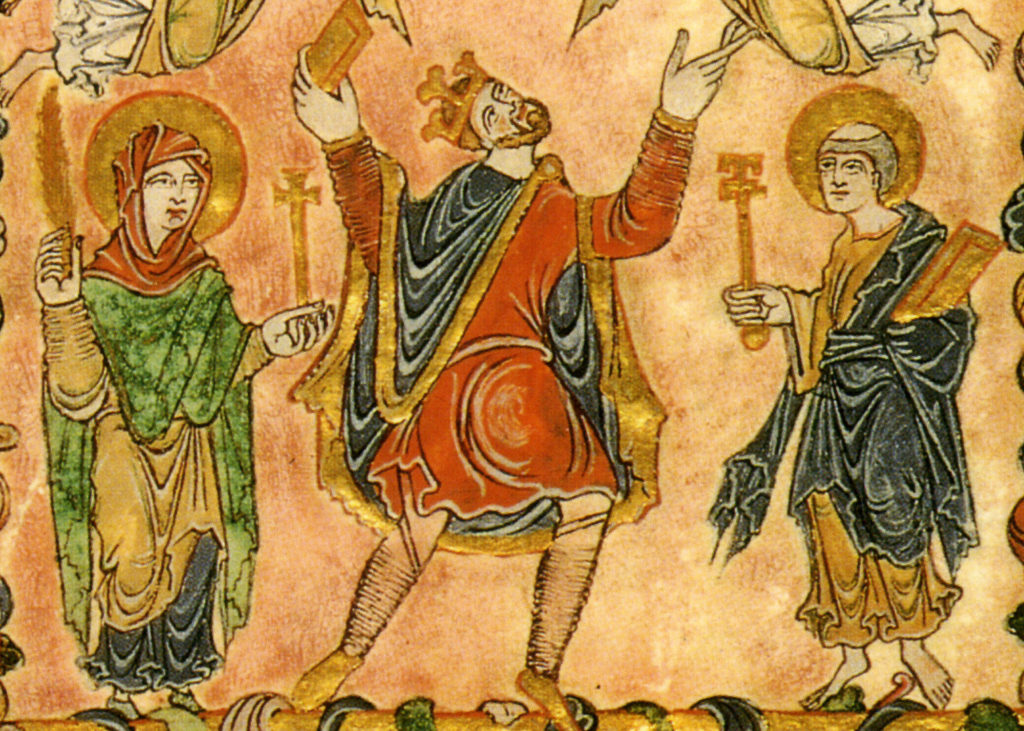The Anglo-Saxons

“Anglo-Saxon” has long been a term white supremacists from Theodore Roosevelt to Marjorie Taylor Greene have used to justify a particular type of white America, one that is a complete myth. Another thing that is a complete myth about this is the idea that Anglo-Saxons were some culturally unified front when in fact they were as diverse as any other set of different peoples, as the literature scholar Jonathan Davis-Secord discusses here:
The reality of the “Anglo-Saxons” was quite different. The historical peoples often known collectively as the “Anglo-Saxons” lived in England during the early Middle Ages, roughly 400-1100 CE. Ironically, those “Anglo-Saxons” were themselves mass immigrants. Coming to England in several distinct groups from different parts of continental Europe in the fifth century, they fought alongside the Britons against other Celts on the island. Soon after, however, they broke their mercenary agreements with the Britons, brought in more immigrants from their original homelands and effectively conquered all but the areas now known as Wales, Cornwall and Scotland. In the next few centuries, the several small kingdoms founded by these invaders became prominent players in medieval Europe.
They were also early globalists, participating in the extensive trade networks that spanned from Scandinavia to southern Asia. They imported ivory from Africa, garnets and cowrie shells from India and even Islamic coins. Early medieval England produced influential intellectuals, like the Venerable Bede, whose works helped define the educated culture of Europe for centuries to come. They also welcomed church leaders from Africa and the Levant, such as Hadrian and Theodore. Although these kingdoms waged a great deal of warfare throughout England, rarely did they pursue conflict beyond the island, preferring instead to develop economic, religious and intellectual connections internationally.
The term “Anglo-Saxon” was rarely used at the time in England. They did not see themselves as a unified race, and actually were a motley collection of different peoples competing with each other. The kingdoms shared a language now known as Old English, but they spoke different dialects, warred with each other and sometimes allied with native forces to get an edge over each other. Partially in response to Viking attacks in the 800s, these kingdoms eventually began to unify politically, but England came fully under Danish control soon after 1000 CE. Then, in 1066 CE, William, Duke of Normandy, conquered the island and brought a certain end to the early English period.
The “Anglo-Saxon” label first appeared shortly before 800 CE in continental Latin works as a way to distinguish the English speakers in England from the distant relatives they had left in what are now Germany and Denmark. The label had not yet developed its overtly racist connotations at this point, but it nonetheless distinguished peoples in a way that built into modern racism. The majority of the term’s appearances in early documents within England itself occurred again in Latin texts, where it indicated expanded royal control over the previously separate kingdoms of the Angles, the Saxons and several other segments of the island’s population. Specifically, King Aethelstan (d. 939 CE) was described in charters at the end of his life as “emperor of the Anglo-Saxons and Northumbrians, governor of the pagans and defender of the Britons.” Those Angles and Saxons — and their kingdoms — were distinct, and the other kingdoms of English speakers (not to mention Wales, Scotland or Danish settlements) were certainly left out of the term’s coverage.
Globalists! Did George Soros control them too?


